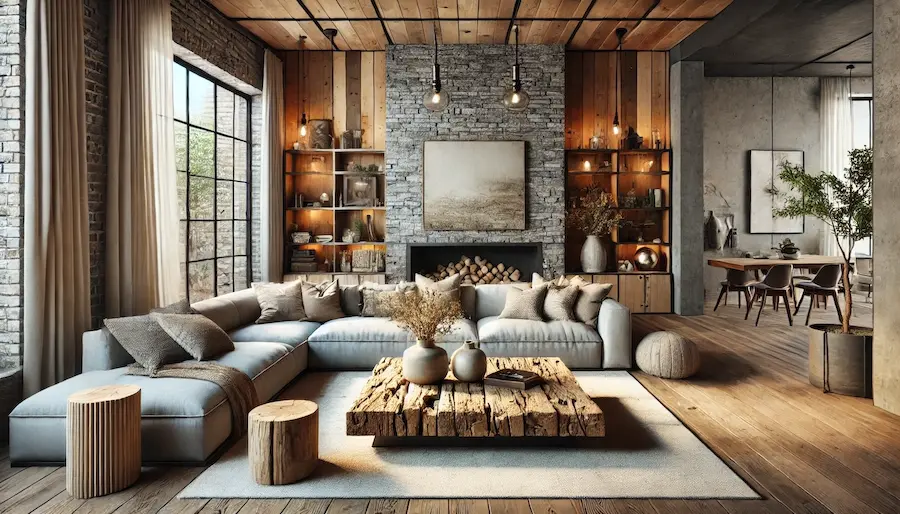The modern rustic living room design harmoniously combines the warmth and charm of rustic elements with the clean lines and functionality of modern aesthetics. This fusion creates a space that is both inviting and sophisticated, offering the best of both worlds.
History and Origins of Modern Rustic Style
The modern rustic style emerged as a response to the desire for interiors that reflect a connection to nature while accommodating contemporary lifestyles. It blends traditional rustic elements—such as exposed wood beams, natural stone, and handcrafted furnishings—with modern design principles that emphasize simplicity, open spaces, and minimalistic décor. This style gained popularity in the early 21st century, particularly in regions like California, where there was a movement towards incorporating sustainable and natural materials into home design.
Key Features of Modern Rustic Living Rooms
- Natural Materials: Incorporate elements like reclaimed wood, stone, and metal to bring an organic feel to the space. These materials add texture and warmth, creating a cozy atmosphere.
- Neutral Color Palette: Utilize shades of white, cream, beige, and gray to establish a calming backdrop. These neutral tones provide versatility and can be accented with bolder hues for added interest.
- Exposed Architectural Elements: Features such as exposed beams, brick walls, or concrete floors add character and a sense of history to the room. These elements serve as focal points and enhance the rustic charm.
- Modern Furnishings: Incorporate sleek, contemporary furniture pieces to balance the rustic elements. This juxtaposition creates a harmonious blend of old and new.
- Layered Textures: Combine various textiles such as wool throws, linen cushions, and jute rugs to add depth and comfort to the space. Layering textures enhances the inviting nature of the room.
Applications of Modern Rustic Design
- Open-Concept Spaces: The modern rustic style thrives in open floor plans, where natural light and spaciousness highlight the blend of materials and textures. Large windows and high ceilings can further enhance this aesthetic.
- Urban Settings: Incorporate rustic elements into city apartments or homes to create a retreat-like atmosphere amidst the urban environment. Features like reclaimed wood furniture or stone accents can introduce a touch of nature.
- Small Living Rooms: Even in compact spaces, modern rustic design can be achieved by focusing on a neutral color scheme, incorporating multifunctional furniture, and adding rustic décor pieces to create a cozy ambiance.
Considerations When Designing a Modern Rustic Living Room
- Balance: Strive for a harmonious mix between rustic and modern elements. Avoid overwhelming the space with too many rustic features; instead, let modern furnishings complement the rustic accents.
- Functionality: Ensure that the space remains practical for daily use. Choose furniture that is both comfortable and aligns with the modern rustic aesthetic.
- Personal Touches: Incorporate décor that reflects your personality and experiences, such as handcrafted items or vintage finds, to make the space uniquely yours.
Conclusion
A modern rustic living room offers a perfect blend of natural charm and contemporary elegance. By thoughtfully combining these elements, you can create a space that is both stylish and welcoming, reflecting a timeless design that adapts to modern living.
